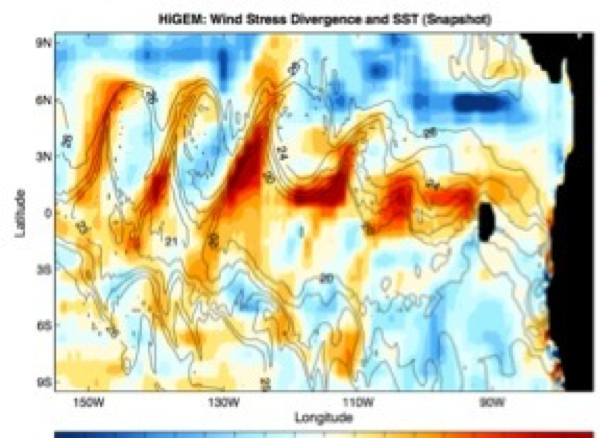Interactions between atmosphere and ocean play a crucial role in establishing the climatology and variability of any given region, and as such are important processes to simulate well in climate models.
Several examples of areas where coupling between atmosphere and ocean has changed as model resolution is increased have been studied. Tropical instability waves (see earlier section) are an important part of tropical variability. These instabilities are an inherent part of the ocean (and begin to be well simulated in our HiHi model), but their feedback and interaction with the atmosphere are also important. The interaction between the ocean SST and the atmosphere is also very important around coastlines, particularly in regions where stratocumulus clouds form and where models typically have large biases.

Figure | SST biases and wind stress in HiGEM over the equatorial eastern Pacific Ocean (Niño 3 region)
An example of when successive increases in atmosphere and ocean resolution have introduced a new process into the model can be seen in studying the Hawaiian current. This current extends for 30-40 degrees in longitude and is formed by an interaction between wind stress curl, caused by the trade winds interacting with the Hawaiian islands, and the forcing this gives to the ocean. In the LoLo coupled model the current is very weak and localised to Hawaii. As the atmosphere resolution increases, so the wind stress curl gets stronger and extends over a longer distance, and as the ocean resolution increases so the induced Hawaiian current becomes stronger and better represented (see figure). A similar process is likely to be occurring in many regions where the wind stress curl, better represented at higher resolution, may interact with the higher resolution ocean and change the mean state or variability.